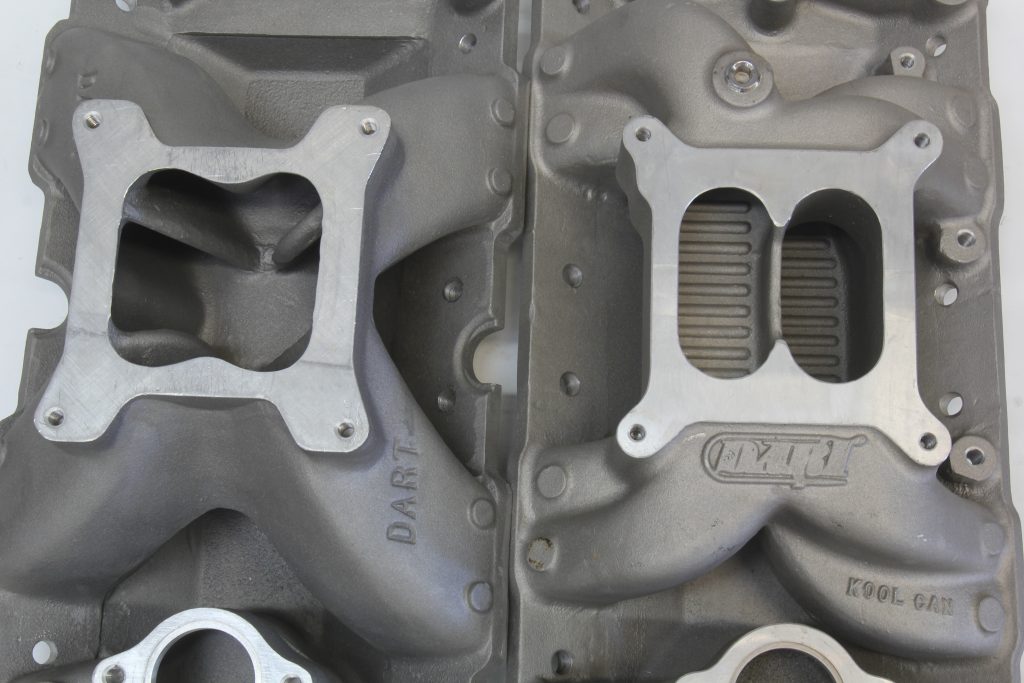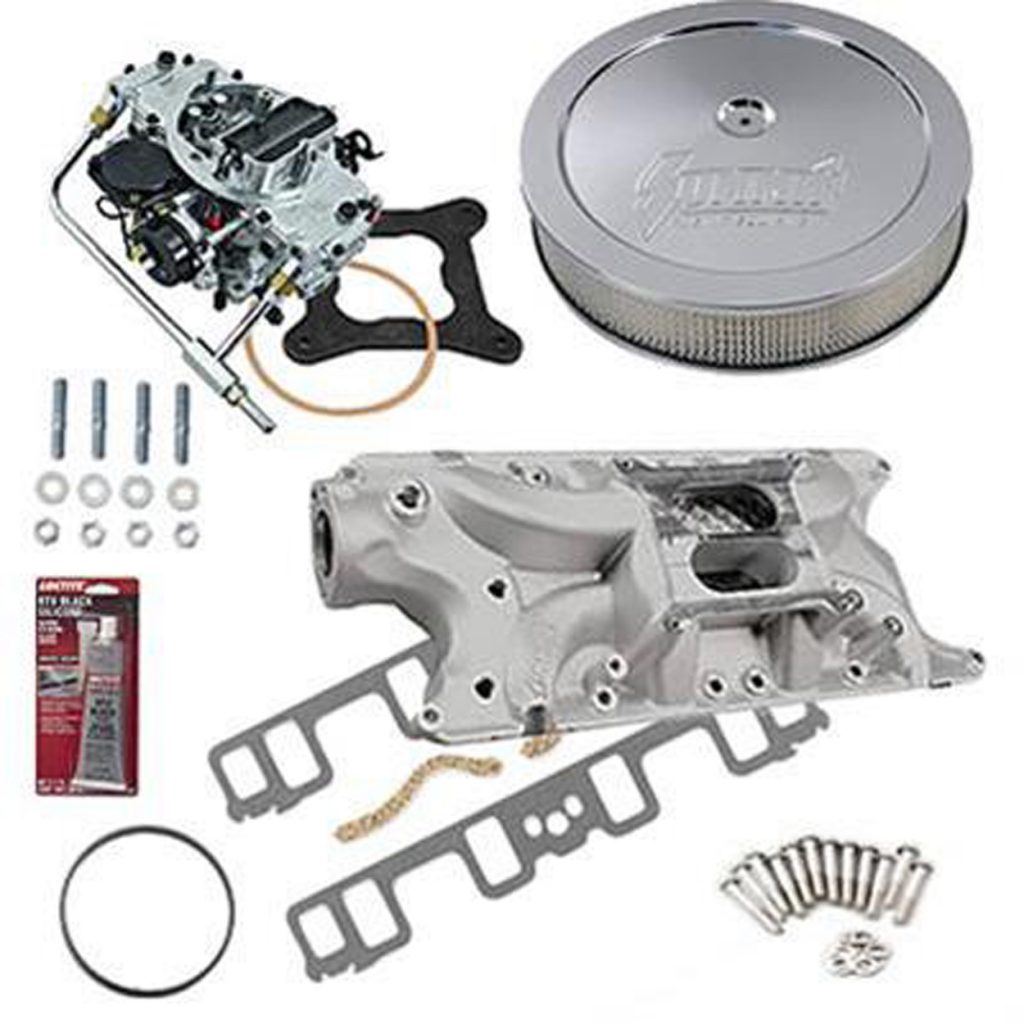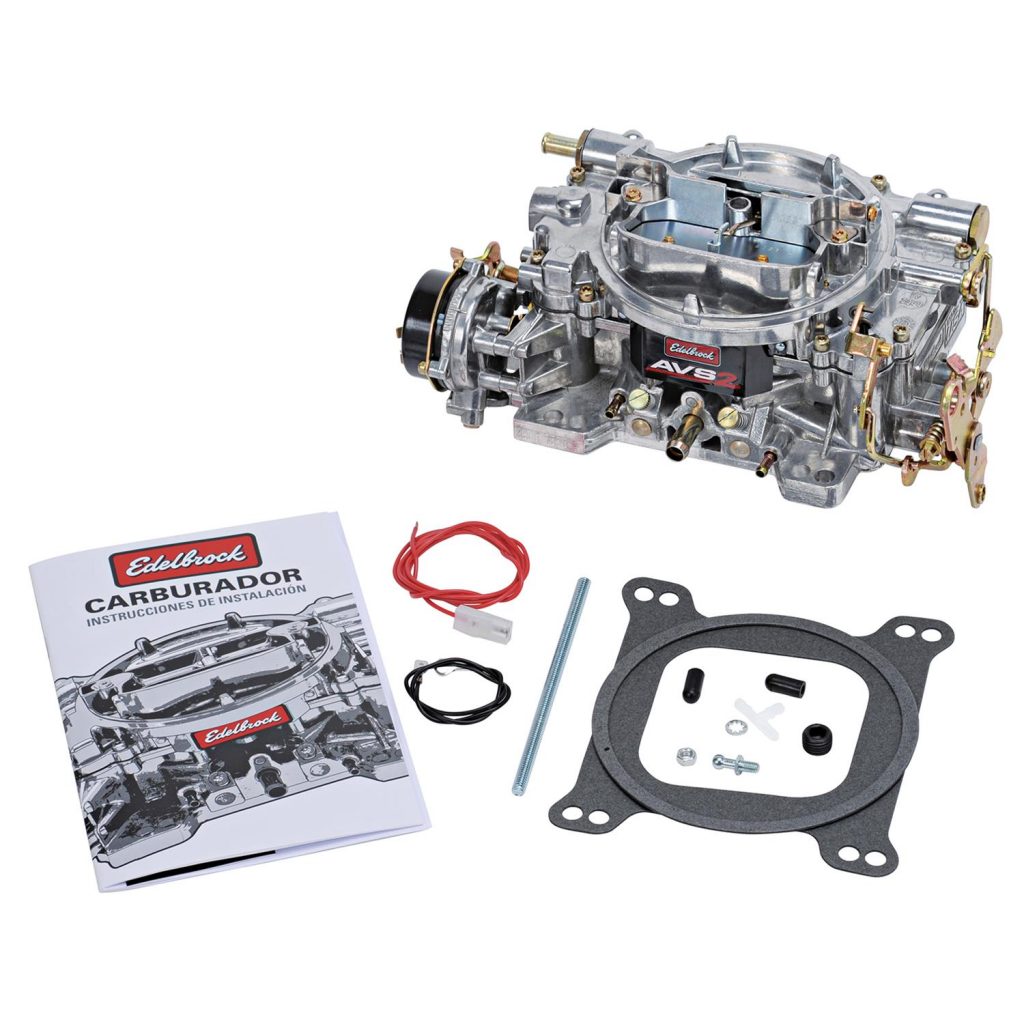I keep seeing all kinds of information on the best intake manifold for a carburetor and all the opinions just make this even more difficult. I have a 5.0L small-block Ford fuel injected engine that I’m putting in a Falcon Ranchero with a C4 automatic and the stock rear end. This isn’t a race car, just an around-town cruiser. Thanks,
J.M.
Carbureted intake manifolds are generally categorized into two main areas: single plane and dual plane designs. The single plane is the easiest to describe so we’ll begin with that one.
In a single plane manifold design, the area directly underneath the carburetor is called the plenum which on a single plane intake is a somewhat large common area that leads to all eight of the separate intake ports. This large common area tends to work well for high rpm engines that tend to make their best power at higher engine speeds. There are several advantages to this design for high rpm use as it offers a direct and nearly straight shot from the carburetor to the intake ports in the cylinder head. This is why it works well at higher engine speeds. The disadvantage is that single plane intakes generally use very short runner lengths which sacrifice low and mid-range torque.
The dual plane intake manifold is really the design that is better suited for your application so we’ll spend some time on a few reasons why.
A dual plane actually splits the plenum into two separate but much smaller areas. Each of these plenums feed four of the eight cylinders. The main reason for this is to increase the length of each of the eight runners. By lengthening these runners, this tends to increase low- and mid-range torque which is beneficial for street engines that spend a majority of their life at low and mid-range engine speeds.
We won’t get into the technical reasons why a longer runner improves the torque as the explanation is fairly complex involving reflected pressure waves and lots of physics. So you will just have to trust us on this.
Of course increasing the length of the runners generally also adds turns which tends to hurt overall flow. If you’ve looked into the potential market for intake manifolds, you may have noticed a huge number of options even for just a dual plane intake for a small-block Ford.
We’ve listed several dual plane intakes from three different companies along with a spec for carburetor height. This is the dimension from the bottom of the manifold to the carburetor mounting flange. We performed a massive dyno test several years ago for Car Craft/Hot Rod magazine evaluating over 20 different dual plane intakes for a small-block Chevy. What we discovered was that power generally followed carb pad height.
In other words, the taller the intake, the more overall power the engine created.
However, carb pad height also affects how close the air cleaner will come to the bottom side of the hood. There are lots of variables here but you might consider that as part of the selection process. For example, the tallest of the manifolds we listed measures nearly five inches while the shortest is less than four inches.
If outright power is the goal, then the tallest manifold is a good choice. That would be the Weiand Stealth, Summit Racing Stage 2, or the Edelbrock Performer RPM. If power isn’t that important, it would appear the Summit Racing Stage 1 or Edelbrock Performer would work very well. (Check out the table at the bottom for links to more specs on each one.)
You didn’t ask about a carburetor, but with a mild 5.0L engine, a 600 cfm carburetor with an electric choke would be a good choice. There are lots of opportunities here. The Edelbrock AVS2 is a great choice and offers outstanding throttle response as it uses an annular discharge booster that enhances light throttle operation.
Another carburetor that looks good also with annular boosters is Summit Racing’s 600 cfm electric choke carburetor.
Both of these carbs offer the linkage hookups for the C-4 automatic so you might consider either of these as possible opportunities. Summit Racing even offers a package that combines a dual plane intake manifold with that carburetor, along with all the gaskets you’ll need—it’s almost like one stop shopping.
Ask Away! Dual Plane Intake Manifolds for Ford 5.0L
| Description | Part Number | Manifold Height |
|---|---|---|
| Summit Racing Stage 1 Intake Manifold | SUM-226030 | 4.78" |
| Summit Racing Stage 2 Intake Manifold | SUM-226033 | 4.97" |
| Edelbrock Performer Intake Manifold | EDL-2121 | 4.12" |
| Edelbrock Performer Intake Manifold (w/EGR) | EDL-3721 | 3.72" |
| Edelbrock Performer RPM Intake Manifold | EDL-7121 | 4.90" |
| Edelbrock Performer RPM Air-Gap Intake Manifold | EDL-7521 | 4.90" |
| Weiand Street Warrior Intake Manifold | WND-8124WND | 4.78" |
| Weiand Stealth Intake Manifold | WND-8020WND | 4.97" |
| Summit Racing Intake Manifold, Carburetor, and Air Cleaner Pro Pack | CMB-03-0202 | 4.78" |
| Edelbrock AVS2 Series Carburetor | EDL-1906 | — |




I worked half of my career in a Dynamometer Lab where we had numerous electric and a few water brake units. In our testing we found most home built engines are over carbureted and consequently run terrible on the street. The average home built V8 will run just fine and perform well on a 600 cfm carb.
Hi Jeff, I have a new Chevy 454HO gen VI. It has the stock dual plane manifold that has a slight cutout in the divider between the two chambers. This engine is in a 1971 Chevy K20 pickup that has plenty of room above the intake to the hood. I put a Holley sniper EFI on the truck and it runs well. Right now it has a 1/4 inch phenolic spacer between the throttle body and the intake manifold to help keep the ECU cool. Would I gain any power by increasing the spacer to a one inch? What would be better, an open spacer or one with 4 holes to match the bottom of the throttle body? Thanks, Jack
[…] I keep seeing all kinds of information on the best intake manifold for a carburetor and all the opinions just make this even more difficult. I have a 5.0L small-block […] Read full article at http://www.onallcylinders.com […]
Hi Jeff, I have an FE390 is a short bed 1968 F100.
The motor was bore .040 over but everything else has all the stock components. (Even has the adapter plate running under The carb with engine coolant) The truck is a weekend cruiser and a few times a year we go on 1200 mile round trips. What intake and carb would you recommend for all around performance
Hi Jeff,
I have a 1970 Camaro RS/SS that has the L34 396 4 speed with a Torker II. I just drive the car for fun and want more throttle response, but don’t want to modify the stock hood. Do you have a recommended manifold for my setup, or should I just leave it the way it is. Thanks
I have a 1964 Chevy C10. It has an Elderbrook open plane intake manifold. Would the Elderbrook AVS2 be a good carburator to run on it? And should I use an open spacer or dual spacer?
I had my Performer RPM 351W intake ported by Bigdogs Porting Service. The average cfm flow was 229cfm between each of the 8 runners, in as casted form. The average flow of each runner is now 326cfm, after Bigdogs Porting opened it up!! My intake now flows better than a factory Super Victor 351W and Victor Junior 351W intakes! This intake is going on my 427 stroker Windsor. I chose the regular Performer RPM 351W intake over the air gap because it is an inch lower and will be better for hood clearance. My motor will have the real world benefits of a dual plane intake with the flow that’s better than either of Edelbrock’s single plane intake offerings. To me, this is the holy grail of an intake, combining the best of both worlds.
I really appreciate the advice trying to put four barrel on my 75 bronco needed to know the combination think I’m gonna go with the summit what would you recommend for heads and cam